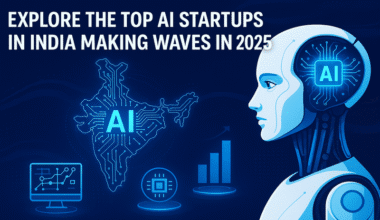Summary: This blog covers top Python basic interview questions & answers ideal for freshers. It explores key concepts, applications, and syntax essentials to help you prepare confidently for job interviews and build a career in data science or programming.
Introduction
Python is a popular and versatile programming language dominating the tech world. Whether you’re interested in web development, data science, or automation, Python is the language of choice for many developers.
If you’re preparing for a job interview as a programmer or Data Scientist, understanding the basics of Python is crucial. In this ultimate guide, we’ll walk you through some of the most commonly asked Python basic interview questions & answers for freshers.
These questions will help you prepare for your next big interview, and who knows, you might just land your dream job!
Key Takeaways
- Python’s simplicity and versatility make it ideal for beginners and data scientists alike.
- Lists are mutable while tuples are immutable—know the difference.
- PEP8 ensures your code is clean and readable—always follow it.
- Use decorators to modify functions without changing their structure.
- Python is essential in data science, web development, and automation roles.
Why Learn Python?
You might be wondering, “Why should I learn Python?” Well, let’s break it down:
- Versatility: Python is used everywhere, from web development to machine learning to game development. It’s a Swiss Army knife of programming languages!
- Strong Community: With a massive community of developers, finding support, tutorials, and libraries is easier than ever.
- In-Demand Skill: Companies across industries are looking for Python skills, which means more job opportunities for you.
- Easy to Learn: Python’s syntax is simple and clean, which makes it ideal for beginners. Even if you’re just starting out, Python is a great choice.
- Automation: Need to automate boring tasks? Python is the perfect tool to make your work easier and faster.
Now that you know why learning Python is a good idea, let’s dive into the basics with some Python basic interview questions & answers.
What is Python?
Python is a high-level programming language that is easy to read and write. Its design emphasises simplicity and readability, making it an excellent choice for beginners. Python is widely used in Rapid Application Development (RAD) and offers features like dynamic typing and dynamic binding.
What are the Benefits of Python?
Python comes with a range of benefits that make it a popular choice for developers:
- Speed and Productivity: Python allows developers to write fewer lines of code, making the process faster and more efficient.
- Extensive Libraries: Python supports a variety of libraries, from web frameworks to data science tools, making it easy to implement complex features.
- User-friendly Data Structures: Python’s built-in data structures are intuitive and easy to use.
- Third-Party Modules: The Python Package Index (PyPI) provides access to thousands of modules that you can use in your projects.
- Easy to Learn: Python’s syntax is straightforward, which makes it ideal for beginners.
What are the Key Features of Python?
Here are some key features that make Python stand out:
- Interpreted Language: Python code is executed line-by-line, making debugging easier.
- Highly Portable: Python runs on various platforms like Windows, Linux, and Mac, ensuring that your code works everywhere.
- Extensible: Python can integrate with other languages like C++ and Java, expanding its capabilities.
- GUI Programming Support: Python helps you create graphical user interfaces, making it ideal for desktop applications.
What are the Applications of Python?
Python is used in a wide range of applications, including:
- GUI-Based Desktop Applications: Python’s libraries like Tkinter and PyQt make it easy to create desktop applications.
- Web Development: Frameworks like Django and Flask make web development a breeze.
- Business and Enterprise Applications: Python creates scalable and efficient enterprise applications.
- Image Processing: Python’s libraries like OpenCV allow developers to process and analyse images.
What is the Difference Between a List and a Tuple in Python?
Lists and tuples are both used to store collections of data, but they have key differences:
- List: A list is mutable, meaning its elements can be changed. Lists are slower compared to tuples but offer more flexibility.
- Example: list_1 = [1, 2, 3]
- Example: list_1 = [1, 2, 3]
- Tuple: A tuple is immutable, meaning it cannot be changed once it’s created. Tuples are faster than lists because of their immutability.
- Example: tuple_1 = (1, 2, 3)
What do you understand about the term PEP8?
PEP8 stands for Python Enhancement Proposal 8. It is a set of guidelines that define how Python code should be formatted to improve readability. Following PEP8 ensures that your code is clean, easy to understand, and standardised.
How is Memory Management Done in Python?
Python uses a private heap space for memory management. The private heap is where all the data structures and objects are stored. Python’s memory manager is responsible for allocating and freeing up memory. The built-in garbage collector recycles unused memory, ensuring your program doesn’t run out of memory.
Differences Between Java and Python
Java and Python are both popular programming languages, but they have distinct differences:
- Coding: Java requires more lines of code to accomplish tasks, while Python’s syntax is simpler and more concise.
- Syntax: In Java, you need to use semicolons and curly braces, whereas Python uses indentation to define code blocks.
- Dynamicity: Java requires explicit type declarations, while Python uses dynamic typing, meaning you don’t need to declare the variable type.
What are the Built-In Types Available in Python?
Python comes with several built-in types to help you work with data:
- Numbers: Integers, floating-point numbers, and complex numbers.
- Strings: Textual data enclosed in single or double quotes.
- Lists: Ordered collections of items that can change.
- Tuples: Ordered collections of items that cannot change.
- Sets: Unordered collections of unique items.
- Dictionaries: Unordered collections of key-value pairs.
What are Python Decorators?
Decorators are a powerful feature in Python that allows you to modify or extend the behavior of functions or classes without changing their source code. Consider decorators as “wrappers” that you can apply to functions or methods to enhance or alter their functionality.
What is Flask and its Benefits?
Flask is a lightweight Python web framework for quickly building web applications. It’s simple to use and provides the flexibility to add your desired features. Flask has no dependencies on external libraries, which makes it easy to start small and scale up as your application grows.
Is Django Better Than Flask?
While both Django and Flask are excellent web frameworks, they cater to different needs:
- Flask: Simpler, more flexible, and allows you to define every detail of your web application.
- Django: More feature-rich and comes with built-in tools, making it suitable for larger applications requiring more out-of-the-box functionality.
What is the Difference Between Numpy and Scipy?
Both Numpy and Scipy are popular Python libraries used for scientific computing, but they have key differences:
- Numpy: Offers basic mathematical functions and array operations.
- Scipy: Builds on Numpy and provides more advanced scientific computing features, including optimisation and integration.
How do We Find Bugs and Statistical Problems in Python?
To find bugs and statistical issues in Python, you can use tools like PyChecker and PyLint. These tools perform static code analysis and help identify potential problems in your code.
What is the Purpose of Indentation in Python?
In Python, indentation is not just for readability—it defines the structure of your code. Python uses indentation to indicate code blocks, making it essential for organising your program.
How Do You Write a Simple Function in Python?
A simple function in Python is defined using the def keyword, followed by the function name and any parameters. Here’s an example:
Alt Text: Python function definition example.
What is the Difference Between == and is Operators?
- == checks if the values of two objects are equal.
- is checks if two variables refer to the exact same object in memory.
Closing Words
Mastering Python is the first step to building a solid foundation in data science, web development, or automation. As evident from the Python basic interview questions & answers covered in this blog, recruiters test your grasp on syntax, data structures, and practical applications.
If you’re aiming for a career in data science, Python is non-negotiable. Pickl.AI’s data science courses are designed to help you go from beginner to job-ready. Learn through real-world projects, interactive modules, and expert mentorship. So why wait? Take charge of your career and start your Python journey with Pickl.AI today.






